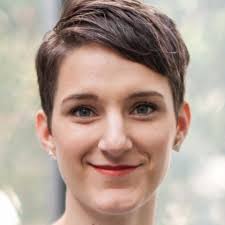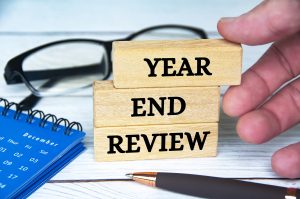Launching a podcast can connect your brand with new listeners, let your content shine, and give business goals a boost. Podcasts are becoming more popular all the time, with general podcast audiences growing 20% each year, per Nielsen.
You’re inspired and ready to dive right in — but where do you start? Learning about the process of podcasting can help you fully understand what it will take to build a sustainable project on your own.
Here’s what you need to know to define your goals and decide if a podcast is truly the right medium and platform for you or your business.
1. Explore Starting a Podcast
When learning how to start a podcast, first think about yourself and your content — and if a verbal/audio format is a good match. If you’re not sure if you’d enjoy the medium, consider being a guest on a few shows first to try it out, suggests Steve Stewart, a podcast editor and producer for personal finance shows.
But keep in mind that speaking and hosting is a skill you can develop, too. Tom Drake, founder of The MapleMoney Show, says he didn’t feel confident as a host at first — and most people don’t. “One of the best moves I made when launching The MapleMoney Show was to have other podcast hosts as my guests for the first five episodes,” Drake says. These podcasting veterans will help with the heavy lifting, giving you a chance to get comfortable while still creating great content.
Consider the technical side and the time commitments. “You have to realize it’s going to be a part-time job” creating new content all the time, Stewart says. On top of that, if you already have skills you could apply to podcasting — or if you’d need to learn them or hire someone to do it for you.
You should also ask yourself, “Why do you want to start a podcast?” Stewart says, and get to as specific an answer as possible. If you have business or income goals, start thinking about how (and whether) this new medium will help you achieve those.
If you already have an audience or following of some kind, podcasting can expand your brand’s reach. Ask your audience if they’d listen to a podcast, suggests Danielle Desir, who expanded her blog The Thought Card into an affordable travel and finance podcast in 2018. “It’s good to get a gauge for what they’re interested in,” she says.
Pulling the above data points together can give you a better picture of if a podcast is right for you, and what shape it might take to achieve your aims.
2. Define Your Podcast
Once you’re ready to take the plunge and commit to starting a podcast, it’s time to get clear on exactly what this project will be. Start exploring your idea for a podcast and defining what will make your message and content stand out.
A great place to start is with competitive research — checking out existing podcasts popular in your desired niche. That’s what inspired Jannese Torres-Rodriguez to create the Yo Quiero Dinero podcast.
“I desperately wanted to connect with other Latinas who were talking about personal finance, building wealth and financial independence,” says. After searching for latina-hosted podcasts about money and having no luck, Torres-Rodriguez decided to start one.
Key questions to get clear on your podcast vision:
- What is this podcast about? What topics will you cover? How will you stand out?
- Who is involved? Is it a one-person show, or will you need to work with a co-host or interviewees?
- Who is your audience, and how will this podcast serve them? Is it informative, educational, or entertaining?
- Is this podcast a new project, or will it build on an existing brand or blog?
- How does this podcast fit into your larger business strategy and revenue goals?
Your podcast will need a name and description, too. “Do a quick trademark search before you name your podcast,” suggests Torres-Rodriguez, so you don’t choose a name that’s already associated with another brand.
This is also a great time to join an online community of creators, such as the Plutus Community Facebook group or Women of Color Podcasters, founded by Desir. You can network with other podcasters, get a behind-the-scenes look at how other creators manage this project, and get real-time support and answers to your questions.
3. Plan Your Podcast Content
With your podcast concept fleshed out, you can start working on the content itself — and how it will be structured.
Jessica Bishop, founder of The Budget Savvy Bride Blog, decided in 2020 to expand this brand with wedding planning podcast The Bouquet Toss. With co-host Sari Weinerman, she worked on a system for podcast content creation.
“We pre-planned and created a template for our episodes so it made building out the content that much more formulaic,” Bishop said.
Building out a format for episodes can help you plan them more effectively, and help each one feel consistent. Consider what format will best fit the content you’re creating, your podcast mission and business goals, and your ideal listener. Here are some podcast segments to consider planning or scripting:
- Episode and segment lengths
- Podcast introduction
- Teasers or rundowns to preview the episode
- Calls to action
- Interview segments
- News, informational, or educational segments
- In-depth deep reports on a subject
- Podcast sign-off
With a format in mind, you’ll also want to decide on topics for your first run of episodes and have the first 10 or so episodes planned, Stewart suggests.
For Bishop, planning the specific episodes started with a freeform brainstorm. “We started out by listing a huge number of possible episode ideas, and then categorized them and ranked them by importance so we knew which topics to tackle first,” Bishop said. She then used the episode template to outline each episode’s specific topic and format, writing out any talking points, research, and anecdotes to include.
4. Record and Edit Episodes
With content planned, it’s time to record and edit it. But first, it’s helpful to learn about the technical side of the podcast. Here are the steps to take, along with the hardware, software, or services needed to execute.
Record the audio: You’ll need at least a microphone and a computer. Other recording equipment to consider includes mic accessories, headphones, an audio interface or a mixer. Learn how to set these items up and test them so you can get reliably high-quality audio after hitting “record.”
Edit the audio: Take the raw audio files you recorded, and edit and polish them to create the finish product. You’ll need a sound editing software such as Audacity, Garageband, or Adobe Audition.
Upload the podcast file: You’ll need a podcast hosting service to which you’ll upload podcast files, such as Buzzsprout or Captivate.
Create a podcast RSS feed: You’ll need a website (or page on an existing website) with an RSS feed of just your podcast episodes.
As you compare different options, Stewart advises that you consider the podcast’s format and your own recording space to choose the right equipment. Two hosts recording in the same room will need a different setup than a solo host who’s recording interviews over the internet.
Remember that your podcast doesn’t necessarily have to be a one-person show. You can outsource many parts of the process by hiring a podcast editor, who can help with everything from choosing the right podcasting hardware to polishing and editing the audio.
Finally, “Trust your gut and just start,” Torres-Rodriguez advises, adding that she recorded her first podcast episodes with her cell phone on the floor of her closet. “If I let the fear of failure or the need to make things perfect before I began, I wouldn’t be where I am today.”
5. Launch the Podcast, Promote — and Repeat
With recording and editing underway, it’s time to look ahead to launching your podcast. The podcasters we spoke with recommended having at least four or more episodes recorded and produced at launch.
The launch itself is fairly simple: once you’ve uploaded your episodes and have them set up in an RSS feed, you can then submit your podcast to directories. These are the podcast apps and streaming platforms where people can find and listen to your podcast, such as Apple Podcasts, Spotify, or Stitcher. Your podcast will be approved after a few days, Stewart says, and then your podcast is officially launched!
With your podcast live, you’ll also want to announce it to your existing audience and promote it to extend its reach to potential listeners. “We outlined a promotional strategy with sharing episodes via social media and email to make sure we are actively promoting, soliciting feedback, and building a community around our content,” Bishop said.
With your podcast launched and promoted, the next step is doing it all again. Continue planning, recording, and publishing podcast episodes. Tweak as you go to develop a sustainable process for your podcast.
Desir started by releasing an episode every two weeks. “I was trying to emulate my favorite podcasters that were podcasting full-time and releasing constantly,” she says. But the churn of constantly creating podcast episodes left her burnt out and without time for other important priorities. So she switched The Thought Card podcast to releasing episodes in seasons rather than year-round.
These steps are just the basics of how to start a podcast, of course. Here are some other resources to turn to, as well:
- How to Book Podcast Guests by Danielle Desir
- 5 Steps for Starting Your Imperfect Podcast Journey by Nikita Burks-Hale, WOC Podcasters
- Beginner Podcasting FAQ from Pete McPherson, Do You Even Blog?
- 5 Mistakes New Podcasters Make by Steve Stewart
- How to Create SMART Podcast Goals with Lindsay Tjepkema, Money & Media Podcast Presented by FinCon












0 Comments